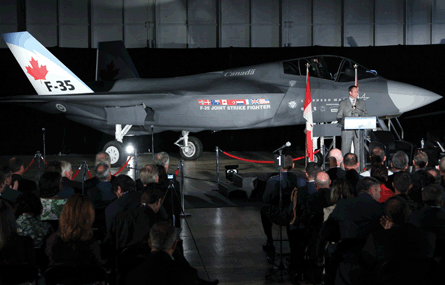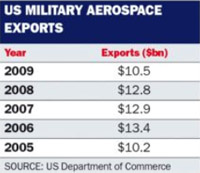Emblazoned with a Maple Leaf flag splashed across its tail, the F-35 parked on stage projected a new kind of power as Canadian officials publicly committed on 16 July to buy 65 Joint Strike Fighters. It was the perfect photo opportunity, but very nearly ruined by the US government's bizarre process for controlling exports.
It is this system that requires a licence each time even a ceremonial F-35 - in reality, merely a wooden mock-up - crosses a national boundary. In this case, Lockheed Martin chose the wrong bridge to truck the model across the border. Since the export licence specifies even which route is taken, Lockheed was forced to frantically file a new application to use a different route, which came through just in time.
But the recent episode was a trivial annoyance compared with the daily frustration of navigating a US export control regime imposed on an increasingly globalised industry.
Over the past decade, US government studies have confirmed the obvious. A quarter of items controlling the proliferation of cruise missiles fall into a trap of ambiguous jurisdictions crossing any of three licensing agencies. The Department of State has finally worked through a backlog of open applications for licences, but long delays remain to resolve complex requests.
 |
|---|
© Lockheed Martin |
The result is a market where US companies battle not only market forces, but the uncertainty of a crudely regulated export system in competition with foreign companies for global arms sales. Meanwhile, commercial firms in the USA are reluctant to take Department of Defense funding on research and development projects, fearing the technologies could be added to either the Munitions or Controlled Commerce lists.
After spending a year studying the problem, the Obama administration's national security team has publicly unveiled a plan to clear up the mess.
In the interim, the administration plans to divide the currently catch-all list of controlled items into three categories, depending on the sensitivity of the technology and whether it is already widely available. Meanwhile, the lists will be clarified with a "bright line" drawn between items controlled by the State and Commerce departments, the administration says.
The US Aerospace Industries Association (AIA), an industry advocacy group, quickly praised the reforms as a boon to small businesses, which "rarely have the resources to ensure compliance with the current export control regime".
 |
|---|
AIA president Marion Blakey says the reforms also will make it easier to share technology with allies, thereby strengthening national security.
But, more controversially, the White House plan unveiled on 31 August calls for consolidating the controlled items on to a single list managed by a single licensing agency. Subdividing the existing lists can be done by the President's executive fiat, but changing the basic structure of the process requires approval by Congress.
"One could imagine that the loyal opposition will ask what's going to happen after the items are decontrolled," says Greg Suchan, a former deputy assistant secretary of state who is now senior associate at Commonwealth Consulting. "Does this mean you don't care if Chinese, Iranians and human rights violators get all this stuff without asking, 'Mother, may I'?"
As the former head of State's directorate of defence trade controls, which manages 130,000 annual licence requests for items on the Munitions List, Suchan believes some reform is necessary. But he is not convinced that US industry suffers from being obliged to participate in the existing process, citing the widespread sales of US-made arms on the foreign market.
As part of the process of separating the controlled lists into three categories, thousands of items could be removed from the export licensing system altogether. In a beta test, the administration analysed how the changes would have affected 12,000 licence applications last year for items in Category VII of the Munitions List, which covers tanks and military vehicles.
This showed that 76% of the items would be removed from the Munitions List and placed on the less restrictive Controlled Commerce List, or else eliminated entirely. Suchan is concerned that such wholesale removal of many items, especially in more sensitive categories for spacecraft, aircraft and night vision goggles, could ultimately backfire.
"Most of these things are there for a reason," he says. "How they end up carrying this out is going to be a challenge."
Source: Flight International
















